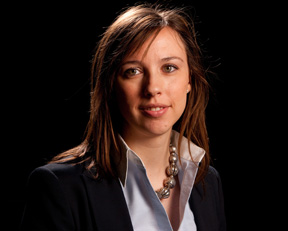In a recently published decision (Case 7416, Decision 33/2015) the Italian Board of Appeal issued its ruling on an appeal filed by Sebastiano Cardillo Ciccione requesting reversal of the Italian Patent and Trademark Office (PTO) decision on Opposition 596/2012 (The Wella Corporation v Cardillo Ciccione).
In its decision, the board confirmed that even if products and services are, by their nature, different, “hygienic and beauty care treatments to human beings and animals” in Class 44 with respect of “hair care products” in Class 3 can be found to be similar, taking into account all the relevant factors.
Facts
On December 21 2012 Cardillo Ciccione filed an Italian application to register the following trademark:
The trademark application was filed in Class 44 for “medical and veterinary services; hygienic and beauty care treatments for human beings and animals; services relating to the fields of agriculture, horticulture and forestry”.
On May 11 2012 the Wella Corporation filed an opposition against the registration of the contested trademark based on Article 12(1)(d) of the Intellectual Property Code, which states that:
“Signs shall not be registered as trademarks if as of the date of filing of the application any of the following applies... d) they are identical or similar to a trademark already registered by others in the Country or having effect in the Country, following an application filed on an earlier date or having effect as from an earlier date due to a right of priority or a valid claim of seniority for goods or services that are identical or similar, if due to the identity or similarity between the signs and the identity or similarity between the goods or services there exists a likelihood of confusion on the part of the public, that can also consist of a likelihood of association between the two signs."
The opposition was based on three registrations owned by the Wella Corporation:
-
Italian trademark SEBASTIAN (Registrations 448772 and 506823) for products in Classes 3 and 10; and
-
Community trademark SEBASTIAN VOLUPT (Registration 997485949) for products in Class 3.
The opposition was directed against the contested trademark inasmuch as it was registered for the following services in Class 44: “hygienic and beauty care treatments for human beings and animals.”
The Wella Corporation requested that the contested trademark be rejected on the basis of a likelihood of confusion due to the similarity of the verbal elements and the similarity of the designated products and services.
For procedural reasons the Italian PTO considered the challenge to the contested trademark only on the basis of the Wella Corporation's prior Italian trademark SEBASTIAN (Registration 448772), registered for products in Class 3 (bleaching preparations and other substances for laundry use; cleaning, polishing, scouring and abrasive preparations; soaps; perfumery, essential oils, cosmetics, hair lotions; dentifrices; shampoo, conditioners and hair spray products; foundation) and Class 10 (surgical, medical, dental and veterinary apparatus and instruments, artificial limbs, eyes and teeth; orthopedic articles; suture materials, hair curling equipment, (electric) hair styling equipment).
Italian PTO opposition decision
On October 30 2014 the Italian PTO ruled on Opposition 596/2012 and agreed with the Wella Corporation that there would be a likelihood of confusion. The Italian PTO cited the following as grounds for its decision:
-
The products claimed in Class 3 for the prior trademark – in particular, “soaps; perfumery, essential oils, cosmetics, hair lotions; dentifrices; shampoo, conditioners and hair spray products; foundation” – and the services claimed by the contested trademark in Class 44 were similar. Indeed, even if by their nature products may be regarded as generally dissimilar from services, they can be “complementary”. In this case, the respective products and services had the same purpose and were in competition with each other, as they were distributed and offered in the same physical locations and to the same consumers.
-
Visually, the signs were similar to the extent that they shared the word 'Sebastian', differing by just one letter (the contested trademark has an 'o' at the end of the word). They also differed by the presence of another verbal element in the contested trademark (HAIRDRESSER) and the particular graphics; however, these elements could not be regarded as decisive.
-
In terms of sound, the trademarks were nearly identical and were almost the same word, while the other elements of the contested trademark played a secondary role.
-
Conceptually, the signs were similar as the dominant elements contained only small differences arising from the English name Sebastian and the Italian name Sebastiano.
-
The earlier trademark had distinctive character since there was no link between the products and the mark itself. While the evidence filed by the Wella Corporation demonstrated use of the prior trademark in Italy, it failed to demonstrate that it had acquired reputation or an enhanced degree of distinctiveness due to use.
-
There was a likelihood of confusion by the public as to the origin of the products and services involved.
Appeal
Cardillo Ciccione appealed, arguing that the Italian PTO had erred in finding that the products and services claimed by the trademarks were similar, since by their very nature products and services are different. Cardillo Ciccione also contested the similarity of the trademarks.
Board of Appeal decision
The Board of Appeal sided with the Wella Corporation, confirming the Italian PTO’s decision.
The board found Cardillo Ciccione’s position on the dissimilarity of the products and services to be unpersuasive. The board made it clear that there is a link between “hair care products” and “hygienic and beauty care treatments for human beings and animals”. Indeed, the close connection between the use of the goods and the services offered leads the public to believe that they likely share the same source. In many cases, the products and services are offered by the same professionals (hairdressers and beauticians); consequently, there is a strong interdependence.
The goods and services at issue were made available through the same distribution channels and in the same locations. In addition, beauty care treatments necessarily involve the application of cosmetic products. Consequently, a strong link exists between the two. In light of these arguments, the board concluded that consumers might have been confused as to their origin and were likely to assume that, being in the same market sector, the goods were manufactured by the same entity as that which offered the services, and vice versa.
Cardillo Ciccione’s argument regarding the dissimilarity of the respective signs was also rejected. Indeed, the board stated that the Italian PTO had correctly held that the dominant part of the contested sign was SEBASTIANO, while the other elements were not so relevant, either because they were descriptive (HAIRDRESSER) or because they played a secondary role (the graphics). The most relevant parts of the signs (SEBASTIAN and SEBASTIANO) were similar from the visual, phonetic and conceptual points of view.
Comment
The Board of Appeal's decision, affirming the earlier Italian PTO decision, is consistent with standard practice of the Office for Harmonisation in the Internal Market when comparing trademarks for services and products. In general, by their very nature products are considered dissimilar from services. However, they can be complementary when services have the same purpose as products, and thus can be in competition with them. It follows that in certain circumstances, similarity between products and services can be found. Products of Class 3 (cosmetics) and services of Class 44 (beauty services) are complementary to one another, distributed in the same place and through the same commercial channels and intended for the same consumers, who may reasonably assume that they come from the same source. Therefore, these products and services are regarded as similar.
The decision shows that rights holders can successfully oppose trademarks for services even when the prior registration relates to products, and vice versa. On the other hand, before filing a trademark, a clearance search for services should include closely related product marks, and vice versa.





